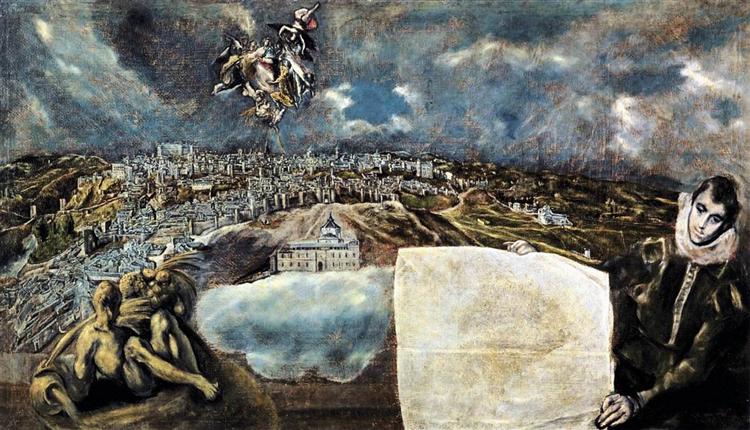El Greco
Domenikos Theotokopoulos, other wise known as “El Greco” due to his Greek heritage, was a popular Greek painter, sculptor, and architect of the Spanish Renaissance. He was a master of post-Byzantine art by the age of 26, when he traveled to Venice, and later Rome, where he opened his first workshop. Unlike other artists, El Greco altered his style in order to distinguish himself from other artists of the time, inventing new and unusual interpretations of religious subject matter. He created agile, elongated figures, and included a vibrant atmospheric light. After the death of Raphael and Michelangelo, he was determined to leave his own artistic mark, and offered to paint over Michelangelo’s Last Supper to Pope Pius V. His unconventional artistic beliefs (his dislike of Michelangelo included), along with his strong personality, led to the development of many enemies in Rome, especially the hostilities of art critics.
Δομήνικος Θεοτοκόπουλος (Doménikos Theotokópoulos)
- Born: 1541; Crete, Greece Places are defined in terms of modern geography.
- Died: April 7, 1614; Toledo, Spain Places are defined in terms of modern geography.
- Active Years: 1563 - 1614
- Nationality: Spanish, Greek
- Art Movement: Mannerism (Late Renaissance)
- Painting School: Cretan School
- Field: painting, sculpture, architecture
- Influenced by: Byzantine Art
- Influenced on: Eugene Delacroix, Edouard Manet, Paul Cezanne, Pablo Picasso, Franz Marc, Jackson Pollock, Roberto Montenegro, Jose Clemente Orozco, Francisco Pacheco, Expressionism, Cubism, Der Blaue Reiter (The Blue Rider)
- Teachers: Titian
- Friends and Co-workers: Giulio Clovio
- Wikipedia: en.wikipedia.org/wiki/El_Greco
EL GRECO FAMOUS WORKS
